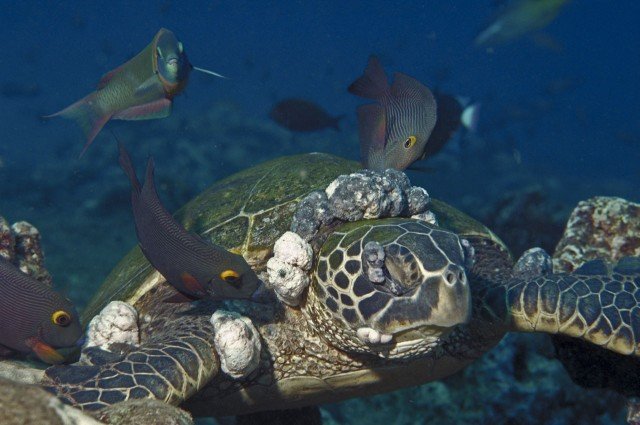
The disease, known as fibropapillomatosis, is thought to be caused by a herpes virus and is specific to sea turtles. Despite looking harmful, the tumors that develop on the surface are mainly benign, but problems arise when they grow over the turtles' eyes, which prevents them from seeing and therefore feeding. Around 20 years ago, vets at the Turtle Hospital in the Florida Keys were seeing around eight turtles a month with the tumors, but recently they have seen a massive increase, now seeing around eight a week.
While the disease is predominantly found in green sea turtles, the hospital has also found it in Kemp's ridley turtles, as well as the larger loggerheads. They have found that around half of the green sea turtles in the area are affected, and treat them by surgically removing the bulbous tumors from their bodies. Sometimes this takes multiple operations due to the severe conditions some of them are in. After this, they are held for about a year to aid in their recovery, but if the disease has spread to their liver and kidneys, nothing can be done to save them. Unfortunately, only around one in five of the turtles recover to a state in which they can be returned to the wild.
The cause of the disease, and why it has suddenly increased in incidence, is still not 100 percent clear. One report looking into fibropapillomatosis in turtles living off Hawaii claims that certain areas around the coast had a disproportionately large number affected due to nitrogen runoff from cities and farms. They purport that an increase in nitrogen in the water leads to the algae converting more of it into an amino acid called arginine. The turtles feed on the algae, and therefore take in elevated levels of arginine, which has been found to support the growth of the herpes virus responsible for fibropapillomatosis.



Reader Comments